Embedded Finance: The phenomenon turning companies into ‘banks’
![]() 15 minutes reading
15 minutes reading
In the past few years, we’ve seen deep changes in the financial industry, while also becoming familiar with concepts and trends that are essential for that entire transformation based on decentralization, emerging new players and financial inclusion. Among those movements, we have Embedded Finance.
Putting it simply, it’s possible to say that it is a phenomenon turning companies into banks. Through Embedded Finance, any business can add financial services and products to their portfolio, without losing sight of their core business.
If you've already used the credit card products of a store, for example, most likely this was an Embedded Finance experience. In other words, this dynamic is already part of our daily lives, making financial services easier to use, more convenient and more personal.
In order to explain in more detail what that phenomenon is and how it is revolutionizing the distribution for financial services, we talked to Bruno Diniz, expert in innovation in the industry, cofounder of Spiralem, Head of FDATA (Financial Data & Technology Association) in South America, professor at Fundação Dom Cabral and the MBA program at USP and author of the book “O Fenômeno Fintech”. Check out our talk below.
Watch the video summary and check out the interview in full!
For starters, what is Embedded Finance?

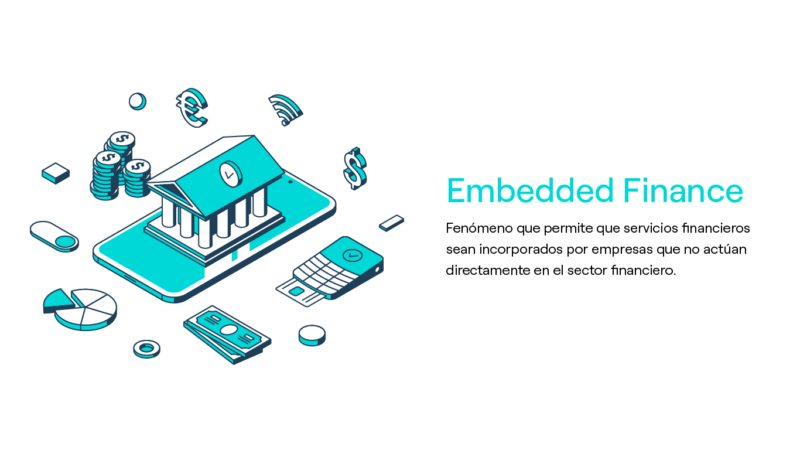
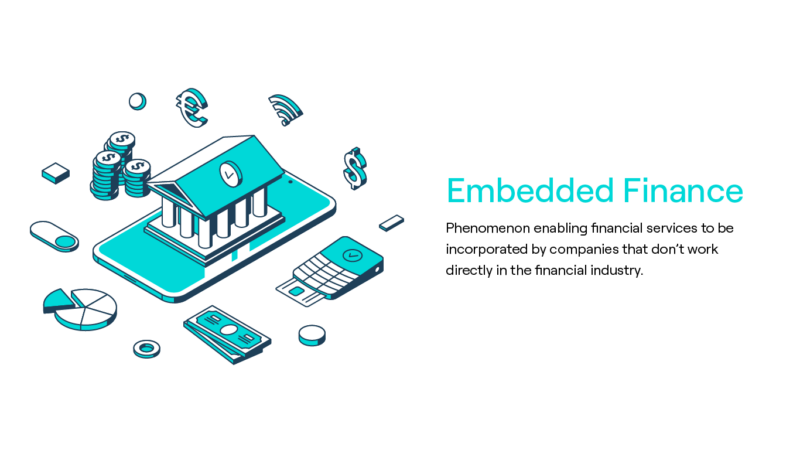
The concept behind Embedded Finance is related to the ability to distribute financial solutions to companies that don’t necessarily work in the financial industry. The goal is to enable them to work in the segment and provide financial services and products for their user and customer base.
So Embedded Finance is connected to that transformation in the financial industry, which makes the line separating ‘traditional’ financial service providers and new providers—which are neither banks nor fintech — increasingly blurred.
We have all types of companies, from have Retailers to technology and phone companies, taking part of that movement and starting to explore that field. At the same time, the technological and regulatory barrier is diminishing, and new service providers in Banking as a Service are emerging by enabling that opportunity.
What types of financial products can be embedded by those companies?
Products like digital wallets, checking accounts, digital accounts, credit, insurance plans, loans, and more services.
Also, we’ve expanded that range to a number of different solutions under the Embedded Finance umbrella—such as Embedded Fintech e Embedded Insurance.
Apart from financial gains, what are the advantages for companies embedding financial services into their ecosystem?
Financial gains are certainly a main advantage in Embedded Finance, since you benefit from monetizing your customer as well as having ‘independence’ of banks for operations, such as paying your employees or suppliers, without having to rely on those institutions.
But not just that: another great advantage is the ability to build a robust solution ecosystem and keep your customer closer to you.
Let’s take a retailer as an example. By adding financial solutions, they have a great opportunity to bank their consumers. Besides, they can also partner with different companies—such as car service or delivery app—and start providing them with a wider range of solutions. That becomes attractive to clients, since they’ll find solutions for different aspects of their lives.
Read also | Financial inclusion in Latin America: The scenario and opportunities for fintechs
What are the facts enabling this emerging and evolving trend of Embedded Finance at the moment?
There are three factors that have enabled us to achieve Embedded Finance. The first one involves an evolving regulation. If we look at the financial industry twenty years ago, we didn’t have so many new players joining the industry, which was more closed when it comes to providing financial services, limited to few institutions. As time went by, the Central Bank expanded possibilities for competition and created new different opportunities to include those new players.
The second one involves technologyitself, which has become increasingly accessible. Twenty years ago, a lot of resources would be necessary to design your operation, which made the required structure extremely expensive for those looking to join the game.
Finally, the third one is about emerging service providers in Banking as a Service, which master that expertise from a regulatory and technological standpoint. So they can put all that into practice in order to enable that transformation.
Therefore, today it is easier than ever to create its own digital bank or embed financial solutions into your business. However, if you try to do that with your in-house structure, you’ll have a lot more trouble. Having support from existing operating companies, which know how to do it and have a variety of cases in their baggage, will make all the difference to drive your operation.
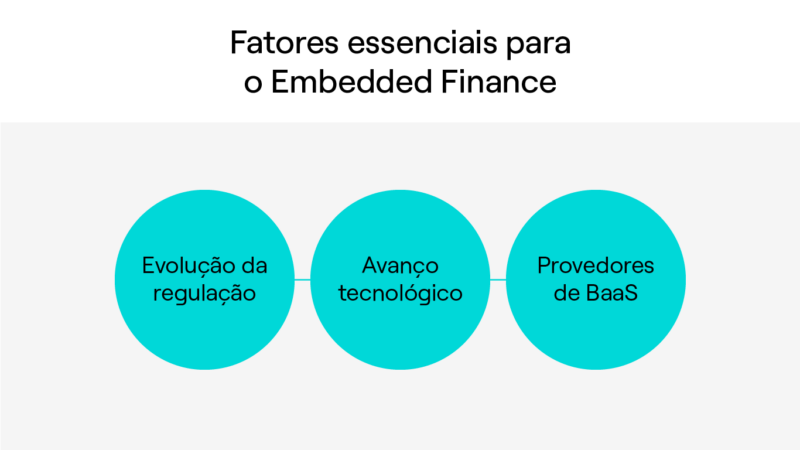

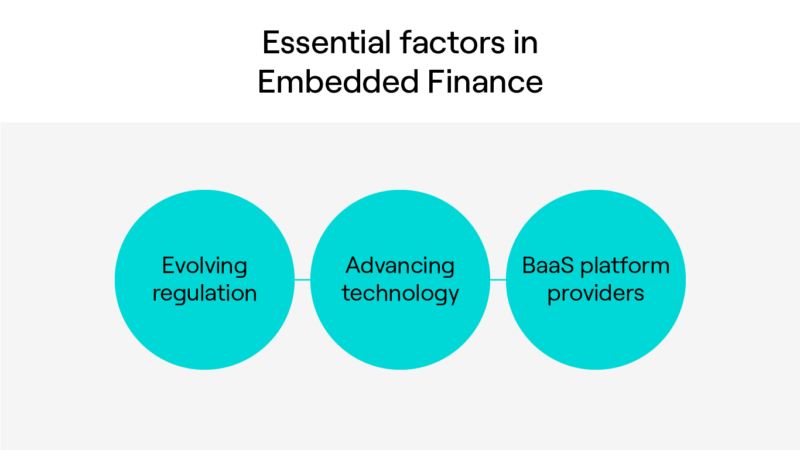
In your opinion, what are the most significant cases showcasing that trend in Brazil?
In Brazil, that phenomenon is relatively recent, but we still have some success cases showing great potential. banQi, from Via Varejo Group, is an example, as well as Voltz, from Energisa Group, which is also starting to develop financial solutions.
There is a huge potential, especially in some segments. Imagine the great opportunity that large retailers have to operate in the financial inclusion of consumers.
Casas Bahia (also from Via Varejo), for instance, deals with the base of the pyramid and offers wider access for those consumers than major banks. Their perspective will also be expanded when it comes to providing their consumers with financial services —not to mention the store environment, which is much more friendly than the intimidating environment of a bank.
Another interesting case involves Mercado Livre, which is an enormous company in the financial industry that is increasingly expanding to different industries. Companies with a large consumer base and a positive perspective on the industry have infinite reasons to start working with Embedded Finance.
Read also | Open X: What’s next after Open Finance?
How does Embedded Finance help financial inclusion in Brazil and other countries in Latin America?
For a long time, in Latin America, we had few options for financial institution and low competition, with very similar fees charged.
Now we see new players joining the financial industry in mass. And that happened gradually: five or eight years ago, fintechs started emerging as competitors. However, they had an entire journey before becoming big enough to compete with major institutions.
With Embedded Finance, now we have more momentum. Today different established companies start providing financial services in our region, which enables a wider range of alternatives.
Besides, that transformation brings the opportunity to financially include a number of people who weren’t commercially interesting for banks in the past. After that change, they are able to use financial services—also because those new players have a different understanding of that consumer profile.
That’s why today the friction for someone to have their first account or start having access to products of that kind is significantly diminishing. You might not be banked, but you somehow leverage some non-financial solution offered by some company.
The entry of these new institutions from other sectors in the financial market represents a great advance in terms of inclusion and bankarization in Latin America.
What is the connection between Embedded Finance and two recent regulatory milestones in Brazil: Pix and Open Banking?
O Pix manages to bring another layer of leveling between the institutions that participate in this market, coming as an element that helps to give more strength to this package of offers that become possible in this new reality of Embedded Finance.
Likewise, the Open Banking it's one of those layers. By making it possible for customer data to circulate among the institutions authorized to participate in this environment, he manages to unlock all this potential even more.
If you are a player outside the financial segment, a delivery app, for example, you already have a much greater reading of your target audience. Let's say you're offering financial products for restaurants. You will understand seasonality, know who has a good quota and how this would impact those who have to pay a loan.
Open Banking is all about empowering citizens in terms of their own information. It is a means for providing information and getting benefits in return. That environment—associated with new actors using it to drive opportunities—is one of the best potential scenarios for including and customizing financial offerings.
What countries are most advanced and have the greatest potential for Embedded Finance?
We have very interesting cases in the United States. Looking at the ones that can make the biggest impact thanks to Embedded Finance, I can't help but mention the big techs that are adding financial services and products.
Amazon is one of them: the company is increasingly stepping into that industry and showing huge potential. In their core business, which now also has an entertainment division, they already offer solutions for different pains. That’s why, when you realize, you’re already deep into the Amazon ecosystem.
However, I also believe that the Embedded Finance movement will help include players from very specialized niches. Here in Brazil, we already have solutions focused on waste pickers, for instance. Now we’ll start seeing more and more solutions appealing to specific niches such as self-employed professionals, truck drivers, etc. So different people will benefit from that phenomenon.
Does Embedded Finance bring any risk for companies or the financial system itself?
I don’t think so, also because the entire movement is supported by as many legal bases as possible. Therefore, if it is enabled, companies providing Banking as a Service will be paying close attention. That’s why I don’t see risks or issues.
Also, I believe that is kind of a myth we need to shatter. After all, the more alternatives we have in the industry, the better. And if the industry allows us to have those new alternatives—for technological as well as regulatory issues—, that is healthy so that we can have more inclusion and choices within the industry.
Land of opportunity: The numbers in Embedded Finance
After reading that interview, there is no doubt that Embedded Finance has advanced rapidly. The scenario offers many opportunities for companies looking to start embedding finance into their business, as some projections show:
- A Finnovista estimates that the global opportunity for that service mode should reach over US$ 7 trillion within ten years—a value 30x higher than the total from XNUMX major banks in the world.
- For Latin America, the international research institute Research and Markets expects the revenue for the embedded finance market to grow by 27% by 2029, reaching 13,7 billion dollars by the end of that period.
- According to a study conducted by Deloitte, industries such as retail, consumer goods and more services contributing to over 35% of the GDP will be able to expand their financial product and service offering and capture R$ 23 billion a year within five years.
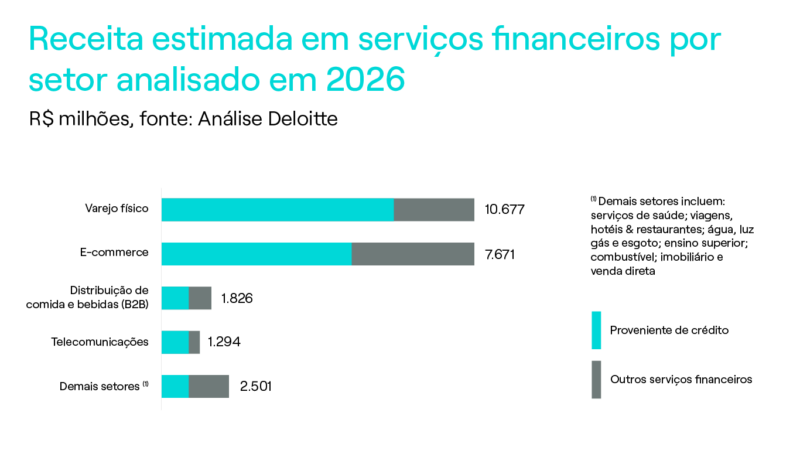
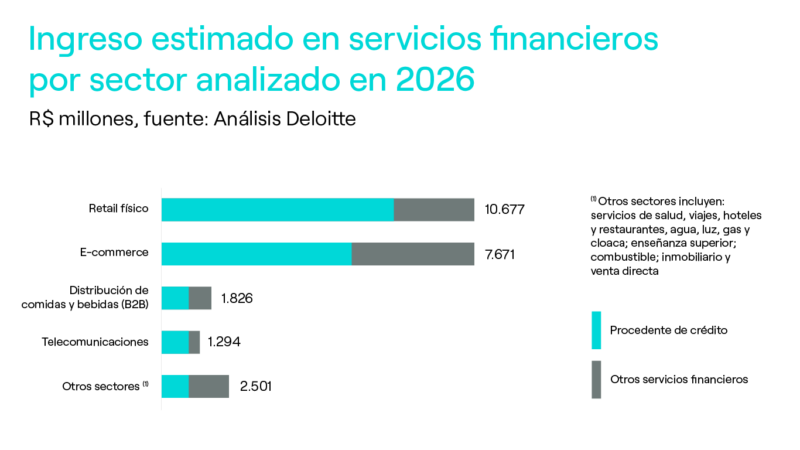
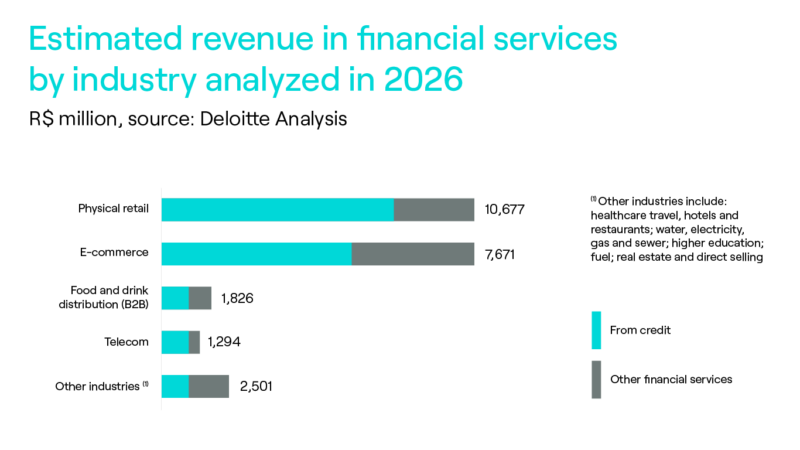
Embedded Finance is part of our project for decoding the financial universe, driving businesses and transforming society
At Dock, our goal is to decode the financial universe, drive businesses and transform society. The concept of Embedded Finance we explored in the interview with Bruno Diniz is part of the way we enable cutting-edge solutions so that players from different industries can offer financial services and products for their customers.
From retail to manufacturing, companies of a variety of industries and sizes can benefit from the Embedded Finance phenomenon. And here at Dock, we’ve supported a number of companies in driving their business and accelerating financial inclusion through embedded finance.
Learn the stories from some of our clients making finance organic and transforming society.
FAQ: Common question on Embedded Finance
What is Embedded Finance?
The expression is used when financial services are incorporated into areas that are not directly related to the financial world. In sum, it is a phenomenon turning companies into banks.
Is Embedded Finance an opportunity exclusively for retail?
Retailers across the world, especially in Latin America, already see Embedded Finance as an old acquaintance. No doubt the industry was a pioneer—and why not a visionary—in adopting embedded finance in their business model.
However, the Embedded Finance phenomenon now goes through a new moment, where increasingly more companies from different industries take part in that transformation.
That’s why offering financial services and products can be a strategy adopted by companies in the B2C as well B2B industry.
What are the advantages for companies adopting Embedded Finance?
Companies that adhere to Embedded Finance can obtain benefits such as the creation of an alternative source of income, Customer Loyalty, reaching new consumers, increasing the average ticket and obtaining a competitive advantage.
It is worth mentioning that the benefits in Embedded Finance go beyond the corporate world, positively impacting users and the means of payment and banking as well as society as a whole.
Embedded Finance: Takaways from this article
- Embedded Finance enables companies (which are not traditional players in the financial industry) to work in the segment and add financial services and products to their offering portfolio.
- Services that can be part of Embedded Finance include digital wallets, digital accounts, credit, loans and insurance plans.
- By reducing barriers for new players to join the industry, Embedded Finance contributes to financial inclusion.
- Pix and Open Banking are regulatory milestones in Brazil that build even more momentum for growing Embedded Finance in the country.
- From retail to manufacturing, companies of a variety of industries and sizes can benefit from the Embedded Finance phenomenon.
Related articles:
- Web3: Understand what it is and the changes it can bring the financial industry
- Agritech: 5 opportunities for innovating in agribusiness by relying on financial solutions
- Financial inclusion in Latin America: The scenario and opportunities for fintechs
- Financial inclusion and fraud prevention: How does security in payments contributes to new advances?